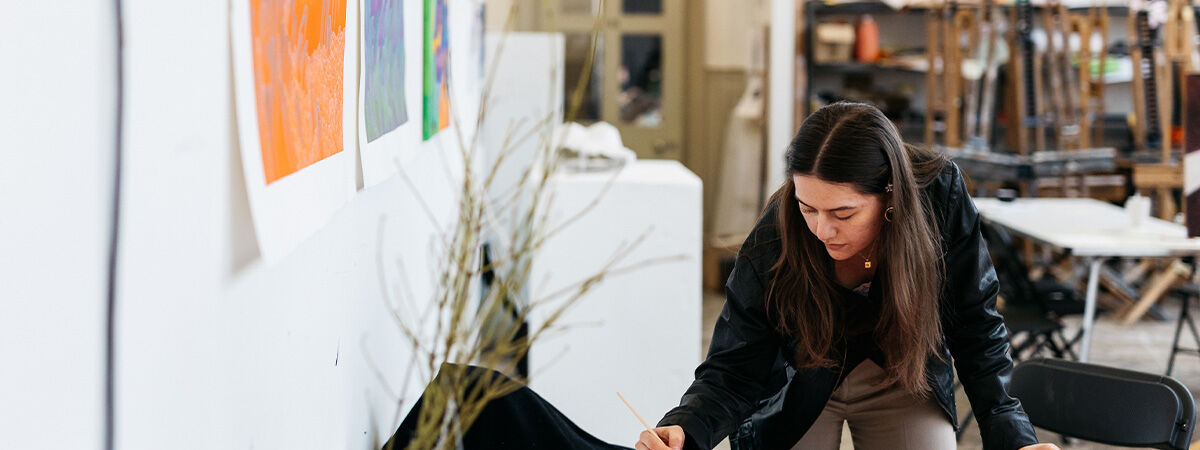Lifeworlds Research Cluster
 Lifeworlds explores how art and design research engages with climate crisis, in the face of incommensurate scales and times of loss and change. The ubiquitous nature of climate breakdown, biodiversity loss, and resource depletion requires new ways of bridging planetary processes and the intimate effects these changes have upon daily life.
Lifeworlds explores how art and design research engages with climate crisis, in the face of incommensurate scales and times of loss and change. The ubiquitous nature of climate breakdown, biodiversity loss, and resource depletion requires new ways of bridging planetary processes and the intimate effects these changes have upon daily life.
Supervisors: Theo Reeves-Evison, Becky Shaw, Kathryn Moore, Sandra Costa
The cluster looks at how creative practices of design, art and writing offer modes of construction, deconstruction, assemblage, iteration, fictioning and speculation that can generate unexpected, disobedient, joyful and liberating ways to imagine and comprehend climate crisis and its alternative.
Art and design practice involves directly making decisions with resources, processes, time, action, space, texture and scale. The manipulation of elements offers ways to understand how the world is assembled and to make forms that embody and imagine it differently. Creative practices of design, art and writing offer modes of construction, deconstruction, assemblage, iteration, fictioning and speculation that can generate unexpected, disobedient, joyful and liberating ways to imagine and comprehend climate crisis and its alternative.
‘It’s not climate change —it’s everything change’, wrote Margaret Atwood in an article in 2021, echoing the many other thinkers, writers and makers who have noted the disorientating quality of environmental crisis and its broader socio-cultural effects. The ubiquitous nature of climate breakdown, biodiversity loss, and resource depletion requires new ways of bridging planetary processes and the intimate effects these changes have upon daily life. As habitable worlds teeter on the brink of extinction, it becomes increasingly necessary to challenge entrenched habits of mind at the same time as providing new pathways to action. There is growing recognition that the challenges of comprehension climate change brings- especially regarding time, spatial scale and the tension between individuals and large social systems, can be explored, articulated, perhaps even re-configured, through the arts and humanities.
This cluster is needed because it will enable consideration of climate crisis time, space and agency from the different dimensions, processes and knowledges of diverse disciplines. Art and design practice involves directly making decisions with resources, processes, time, action, space, texture and scale. The manipulation of elements offers ways to understand how the world is assembled and to make forms that embody and imagine it differently. Creative practices of design, art and writing offer modes of construction, deconstruction, assemblage, iteration, fictioning and speculation that can generate unexpected, disobedient, joyful and liberating ways to imagine and comprehend climate crisis and its alternative.
The differing insights of these knowledges are rarely brought together on common problems. The cluster offers the possibility for these disciplines to lead cross-fertilisation and interdisciplinary modes of working across the university and beyond.
The puzzle of materiality sits at the bottom of every single human and non-human encounter, from the most abstract of astronomical problem, the initiation of life on earth, the way a human infant encounters their separation from their environment, to how pixels of ink might be understood as an image, or a window frame is understood as visual language, substance and function. The list is endless, but at the centre of it is a complex flow of transformations between form and not-form, or from one substance to another.
The types of knowledge we garner from making or material exploration sit alongside more scientific or commercial notions of knowledge. Given this, our cluster will seek to develop the research practice of all its participants (including those who don’t use practice) so we are better able to undertake and think critically about material research processes, and to articulate ours to others. In addition to reflecting on our own research, we will also seek ways to work together, generating events, encounters, and exhibitions that actively deepen and challenge the possibilities of materiality research.